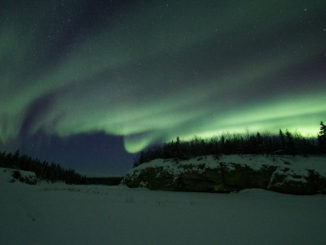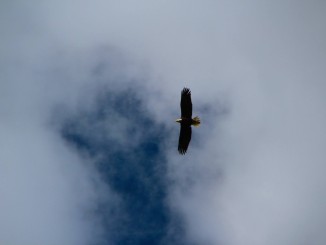Photography has long been a passion of mine. The ability to capture a single moment in time simply with the push of a button is pretty incredible. Technology is always changing the way we shoot the world around us. With cameras built right into our smart phones all we have to do is pull them out of our pockets and start clicking. Apps, such as Instagram, now allow us to share those images instantly with the entirety of the connected world. You might even be questioning whether bulky full-frame DSLR cameras or even the newer and smaller mirrorless models still have a place in a world where devices seem to be getting smaller, lighter, and more compact. We are bombarded by photos the moment we unlock those devices and I, for one, am thrilled by that. Photographs are a work of art and when combined with text can greatly enhance the intended message. This is why I make it a priority to include photos with all of my stories. Many of them are my own work, but the best ones have been taken by people far more talented behind the lens than I am.
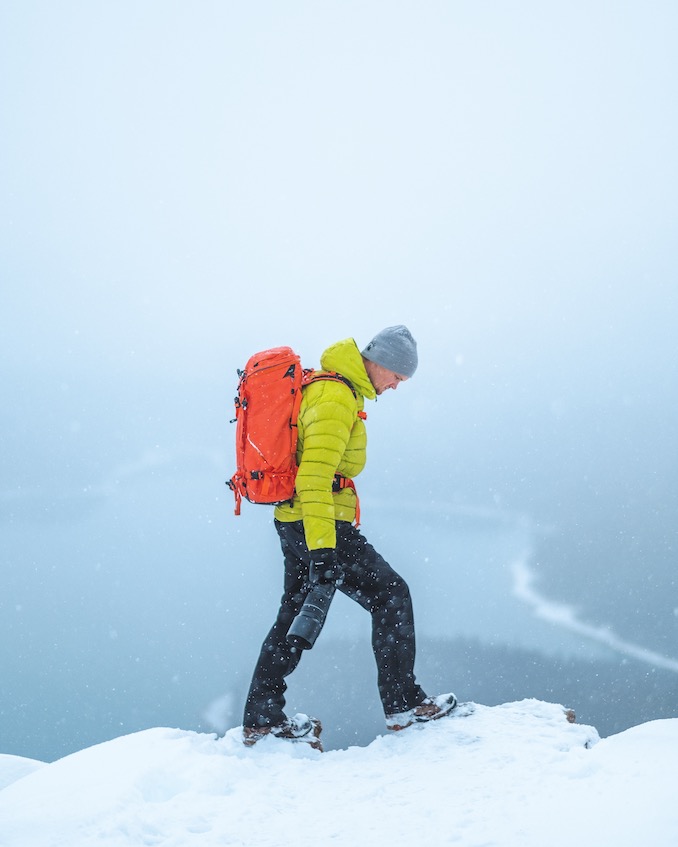
Recently I had the pleasure of chatting with Tyler Weber, a superbly talented Alberta-based adventure photographer, about his profession, the intricacies of capturing mountain sports in challenging conditions, and the type of gear he is currently using. Tyler is the second photographer I have had the pleasure of interviewing. Three years ago I had an opportunity to discuss wildlife photography with Cai Priestly and how he captures some of Alberta’s most elusive wild animals. What follows is an in-depth interview with a burgeoning artist whose passion for mountain sports and photography is truly infectious.
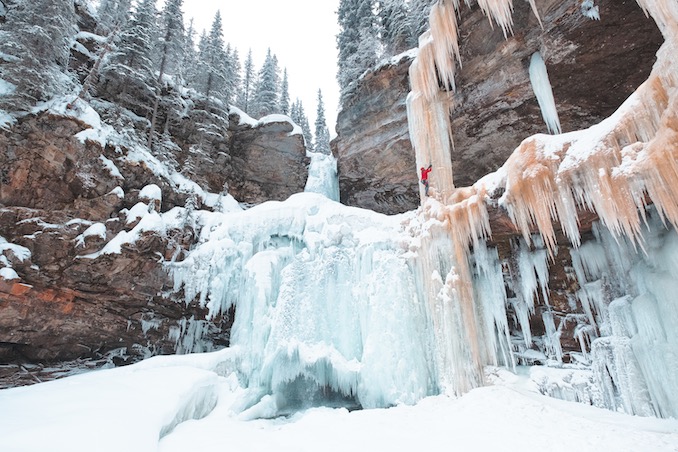
Calgary Guardian: “I’m hoping to start this story with some background information. Where were you born and raised? Where do you currently reside? Is photography a full-time job for you at this point?”
Tyler Weber: “I’m a born and raised Alberta boy. I currently live in Grande Prairie, Alberta with my wife and family. There I teach high school photography. At this point in my life photography as a profession is balanced with my teaching. I am still establishing myself as a professional photographer and am happy with the balance. At some point I can definitely see myself solely as a photographer but as of now the balance is working so I am pretty happy where things are at.”
CG: “How did you get into mountain sports photography?”
TW: “Photographing mountain sports began initially with a love for the mountains. My now wife and I would spend our summers hiking in the Rockies and so I thought it would be a good idea to buy a half decent camera, you know one of the big ones lol! I didn’t take things too seriously at first until I gained the mentorship of a great photographer, Jean Paul Gaboury. He lent me my first L series Canon lens and I began to shoot landscapes, also a huge passion of mine. He gave me some insight on what it took to make the camera hum and I was hooked. After, I fell in love with climbing, the two passions kinda merged together organically.”
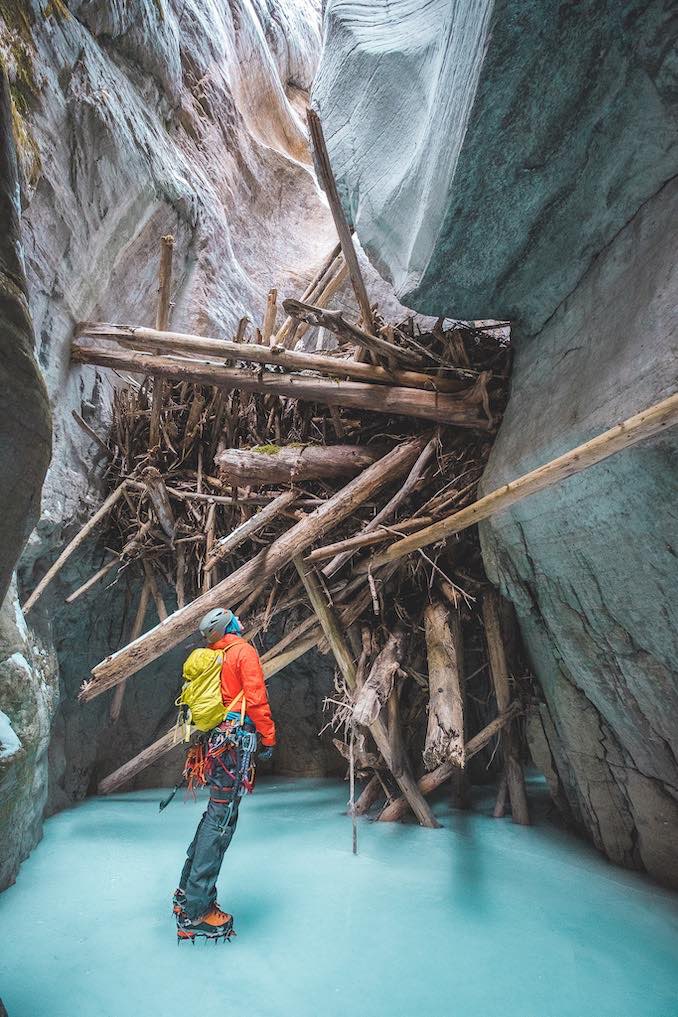
CG: “Do you have a favourite sport/activity to photograph? What makes that one so special?”
TW: “I think ice climbing is my favourite sport to photograph. Ice is always aesthetically so beautiful, otherworldly to a degree. It’s a frozen landscape that comes alive when you add the contrast and scale of the climber. I love to showcase the athletes in a way that makes my audience feel the same way I am feeling when I am out climbing and shooting. It’s about capturing a special moment in places that can seem like they belong on another planet.”
CG: “Do you have a favourite athlete that you enjoy working with? What separates him/her from the rest of the action sport athletes out there?”
TW: “At this point I work with whoever I am climbing with, these are my trusted friends and climbing partners. What sets these athletes apart is that they know me well enough to understand that I might ask a little more of them if the opportunity arises. I am grateful that they have become a part of my creative process. These days it has become more of a team effort when it comes to me getting the images I am looking for. My trusted climbing partners at this point, who seem to make it into most of my images are, Tyler Edey, Julian Camsell, and Craig Waters. All a bunch of stand-up guys who make my work possible, and I can’t thank them enough for putting up with me.”
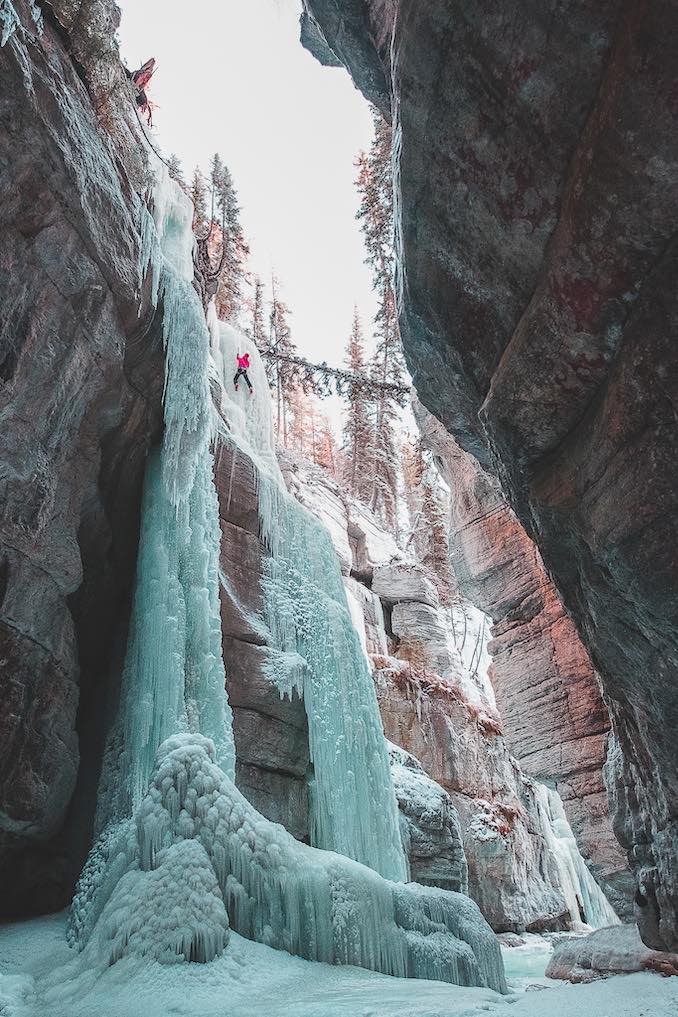
CG: “Have you worked with any mountain sports professionals in the past? Can you tell us who? What about shooting for specific brands?”
TW: “At this point in my career I haven’t really worked with any ‘big name’ climbers although I am always up for working with talented athletes to create compelling images. In regards to shooting for brands I have worked with a number of brands and organizations in the past, more recently I have worked and am working with a few notable companies. I recently wrote a piece for the outdoor backpack company F-Stop Gear, on a day in the life of an adventure photographer. I had a lot of fun with that one. I also have two companies who endorse me, Duer Performance and Karun Optics. Both are companies that make amazing products and are doing great things!”
CG: “What’s the one piece of camera gear that you take with you everywhere?”
TW: “I rarely take just one but If I had to choose it would be my Fuji 10-24mm lens. It’s on my camera eighty percent of the time. It’s just so versatile for what I shoot with the ultra wide angle and the ability to zoom.”
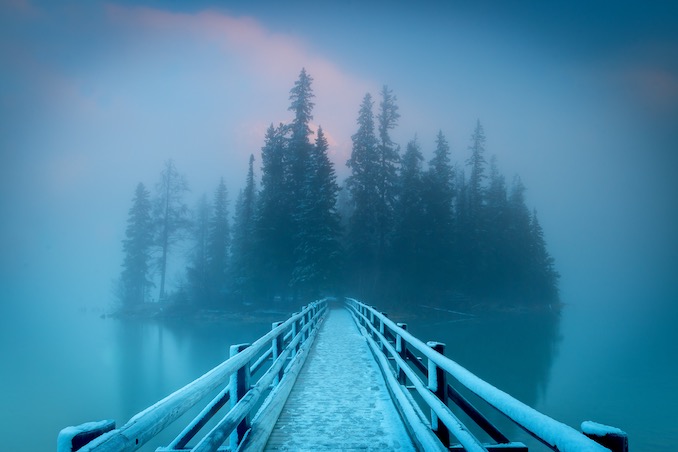
CG: “I’m guessing photography has taken you to some pretty incredible places. Is there one place that particularly sticks out for you? What made it so special?”
TW: “There’s so much beauty everywhere I photograph it’s hard to nail down one location. Although there was one morning at Pyramid Lake in Jasper National Park when the conditions came together like they never had and have yet to since. I felt like the photography gods had sat their tripods down right beside mine that morning. It was an early April morning and there had been a fresh spring snow which covered the scene with a crisp white blanket. To make things even better it was the time of year when the cold lakes would produce a thick fog. With the combination of these two variables, as well as perfect blue hour light, the scene came alive in a way I will never be able to describe in words. I think that is what is so compelling about photography – being able to take an incredible moment in time and show it to the world.”
CG: “I’m assuming you have to be pretty proficient at a variety of sports yourself. Are your skills on par with the athletes you’re shooting or do you just have to be able to keep up? I’m also assuming personal fitness is a pretty important part of the job?”
TW: “In the past I would consider myself a rock climber versus an ice climber. That’s why you don’t see too many images of rock climbers because I am often working on my own projects and am focusing less on images. Ice climbing is a relatively new discipline for me therefore I am often focusing more on keeping up with athletes and making compelling photographs. I guess to answer your question I would consider myself an above average rock climber that is slowly taking his education from the rock to the ice. Training is definitely important these days in the world of climbing. With the sport evolving and grades getting pushed higher it’s important to be able to keep up with the youngsters that are advancing the sport further and further.”
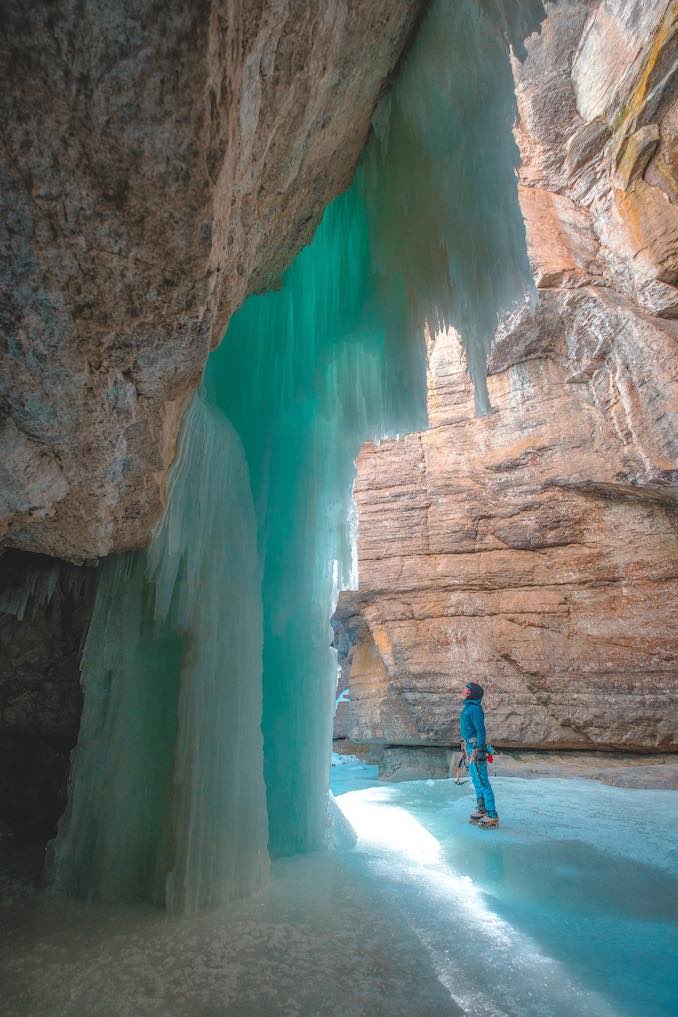
CG: “It would seem as though you’re doing more work than the athletes in your photos. You’re carrying around heavy camera gear and you’re always moving ahead of your subjects to get that head-on shot or you’re staying way back and then having to catch up again. Is this true? Does that put added pressure on you?”
TW: “I try to keep it pretty light when we’re out climbing, usually limiting myself to one camera body and two lenses. This helps me to keep up with my climbing partners. In order to keep things moving and stay out of the way I will often research locations in order to know where I want to be in order to get the shot I am looking for. If I find myself in a location that is new to me I am constantly trying to think ahead, in order to put myself in a position to get the shot. My number one objective is to keep everyone safe on the climb, that always pulls rank over images. This definitely puts added pressure on me, to produce images while remaining safe and efficient during the climb. It’s usually a guarantee that I am more exhausted than usual after shooting a climb because I am running around like a man possessed while shooting.”
CG: “If your skills allow you to keep up with high performance athletes, why did you choose to stay behind the lens instead of being the subject yourself?”
TW: “I’m still struggling with this one. There are definitely times where I know I could have walked away with some stellar shots but instead I have decided to keep the camera in the bag and focus on climbing projects. Then again I have missed a number of opportunities to climb because I have been shooting. This is a balance I am still trying to strike, and I think in the end it simply boils down to more time spent in the mountains.”
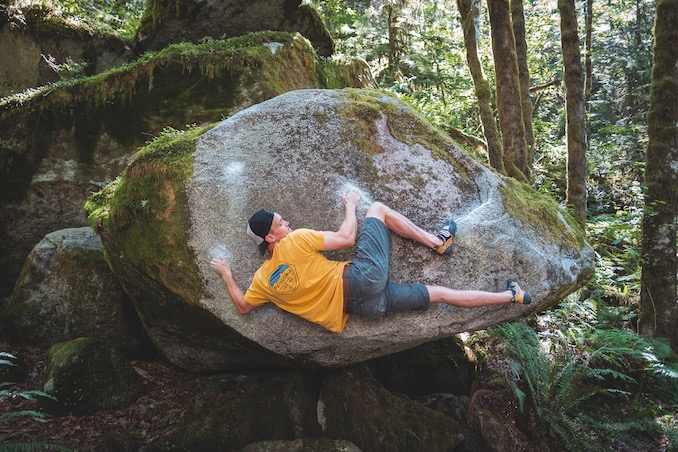
CG: “Spending more time in the mountains is likely something we can all agree with! Is there one sport/activity that stands above the rest for you? One that you enjoy doing more than all the rest?”
TW: “Bouldering is my favourite discipline. I love the simplicity of it and the process of problem solving that it demands. It’s also something I can do on my own. My family and I spend our summers in Squamish, a bouldering mecca in BC. Nothing feels better than throwing the pad on my back and riding my bike to my project. It’s just so simple and pure.”
CG: “It seems as though most photographers are split between Canon and Nikon. Do you have a preference for one over the other?”
TW: “I myself shot Canon for years and have recently switched over to Fujifilm. I have never been loyal to any camera brand as I feel with today’s technology you can’t really go wrong. I say if it suits your needs as a photographer then go for it. I love Fujifilm because it’s lightweight and has a lens lineup that is small and produces stunningly sharp images. Many people have asked why I moved away from full frame or why I didn’t go Sony when I switched to mirrorless and for me it all boiled down to size and weight. The last thing I want is my camera gear holding me back and taking up room when I am moving through the mountains. Again, I think all these brands have a ton to offer, but for now Fuji suits my needs best.”
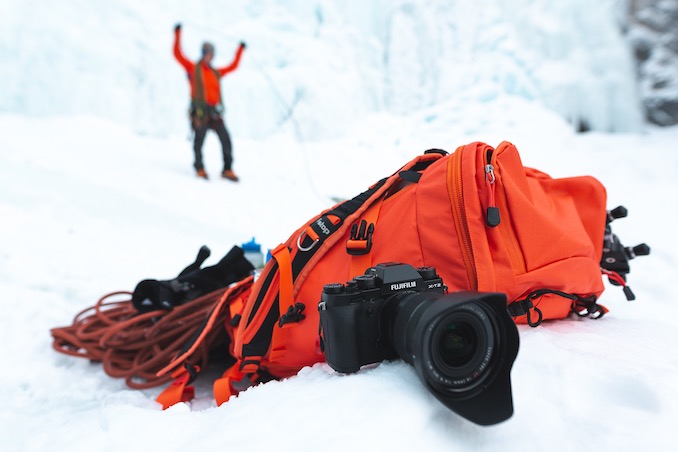
CG: “Ever since GoPro hit the market it seems as though they are the premiere brand for action sports. Do you think GoPro has a place in mountains sports photography? If so, where do they fit with more conventional cameras?”
TW: “GoPro Cameras are unique in the way that they are small and always on. GoPro does a great job of capturing mountain sports and mountain athletes in the moment. I love my GoPro for behind the scenes shots. So often I don’t even record video but rather set the camera to shoot images on 5 second intervals. It’s always super fun to mount the camera on my helmet and then see what it has captured after a day out shooting and climbing. They are also super tough. I once dropped my GoPro off a climb and it fell 200 meters and lived to tell the tale! I feel like they are complementary to the conventional cameras, but I don’t think they will ever replace the interchangeable lens camera system.”
CG: “You shoot in some pretty gnarly conditions. How do you keep your camera gear protected from the elements and working properly in remote locations?”
TW: “The honest truth is that I don’t worry too much about my cameras as they kind of take a beating. I have the mentality that they are tools that need to be used. I do have my F-stop bag that is super versatile and holds all my gear when I am getting from A to B, but most of the time my camera is hanging off my harness or sitting in some snowy puddle while I am worry about climbing logistics.”
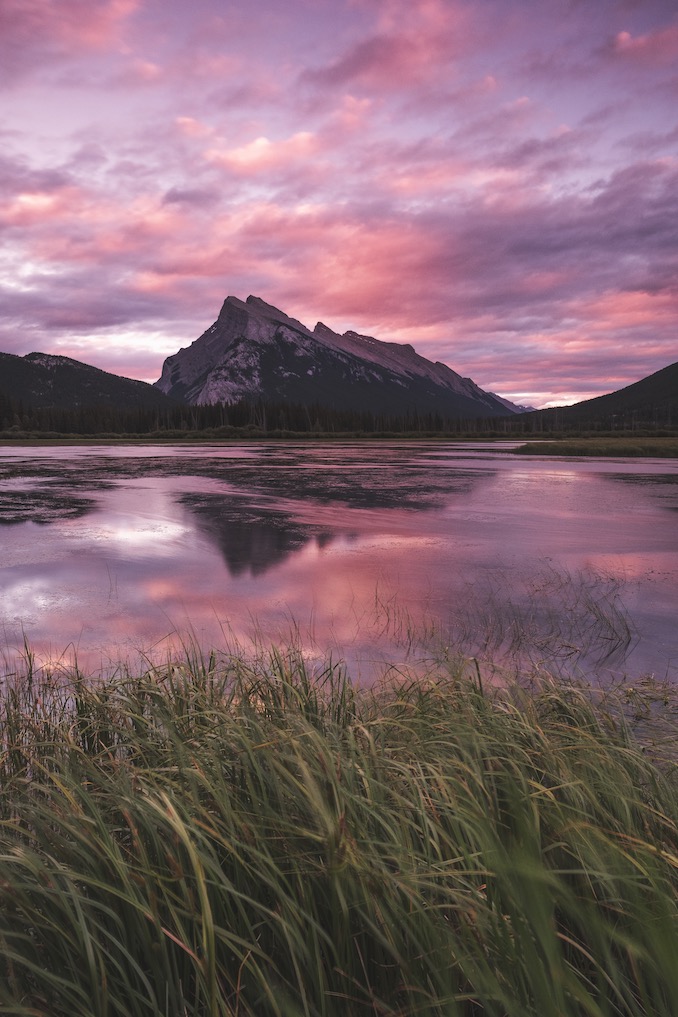
CG: “Have you had any close encounters with wildlife or scary moments while in the field?”
TW: “I once had a Big Horned Sheep square up with me on a ridge line. We tried to wait him out but in the end we had to descend a few meters and traverse around the big guy. He was in no mood for random climbers invading his turf and had bluff charged us a few time before we agreed he probably wasn’t going to back down. I also had a couple sea lions join me on the rocks once when I was shooting on the coast. Being a prairie boy I wasn’t sure if they were going to eat me or if they were just curious. In the end they eventually flopped back into the ocean and carried on along the shoreline.”
CG: “Is there any advice you’d give to the aspiring photographers out there?”
TW: “I think we need to be out shooting what we love because we love it. Not because social media demands it or we are looking to gain a following. The minute it becomes about anything other than passion we need to take a step back and reevaluate why we are doing what we are doing. If we stay true to our passions and work hard the rest will take care of itself.”
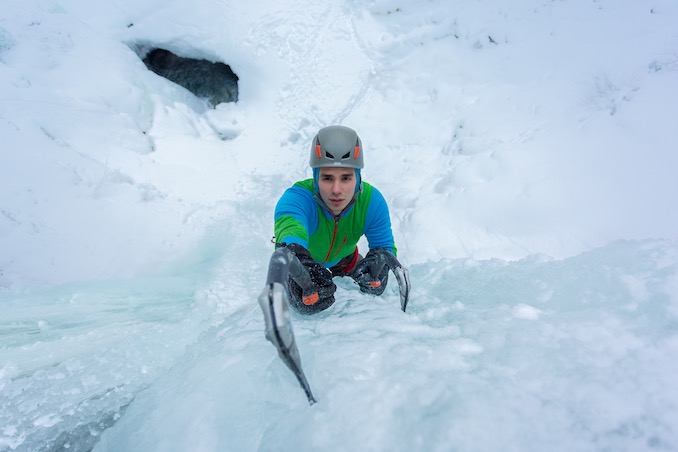
After chatting with Tyler the devotion to his craft and dedication to improving his skills becomes abundantly clear. His passion for capturing mountain landscapes and the recreational opportunities they afford oozes through his words and you just can’t help but be drawn in. I feel privileged that he agreed to be interviewed and was willing to share his thoughts, opinions, and insights with all of us. Thank you Tyler for taking time out of your busy schedule to make this possible.
For those of you that want to see more of Tyler’s amazing work please follow him on Instagram and Facebook. You can also check out his website for even more stunning images.
***
About this column:
Wild Jobs is a running series that focuses on people in outdoor-related professions. It provides a brief snapshot of their career and the duties that it entails. Please see my previous post, Wild Jobs Part Thirteen: Mountaineering Guide to learn more.



